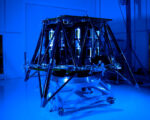Mayonnaise, commonly known as a beloved condiment for sandwiches, is unexpectedly finding its way into scientific research as a tool for studying nuclear fusion. The unique behavior of mayonnaise—shifting from elastic to plastic under different conditions—provides valuable insights into how materials react under the extreme environments necessary for fusion. When gently jiggled, mayonnaise behaves elastically, returning to its original shape like an elastic band. However, when subjected to more forceful movement, it exhibits plastic behavior, permanently altering its shape. This fascinating property of mayonnaise offers a simplified model for understanding complex material dynamics in fusion reactions.
Nuclear fusion itself is a process that involves merging lightweight atoms to release energy, a reaction that requires precise control and understanding of the materials involved. Scientists are working to ignite fusion reactions that produce more energy than they consume, aiming for a breakthrough that could lead to clean and virtually limitless energy. In a landmark achievement last December, researchers at Lawrence Livermore National Laboratory in California successfully fired 192 lasers at a small fuel chamber, resulting in fusion reactions that yielded surplus energy. This breakthrough demonstrates the potential of nuclear fusion as a viable energy source, but it also highlights the complexities involved in material behavior during such reactions.
One of the critical challenges faced by researchers in fusion experiments is studying material behavior under the extreme conditions present during the fusion process. The fuel capsule, which contains the gaseous fuel necessary for fusion, behaves similarly to mayonnaise when subjected to heat. As the capsule heats up and begins to melt, it transitions from an elastic state to a plastic one. If this transition occurs too soon, it can lead to the escape of gas, significantly hindering the fusion process. Understanding these transitions is crucial for ensuring that fusion reactions can be controlled and sustained.
The use of mayonnaise as a model for studying these material dynamics is a testament to the innovative approaches scientists are taking in the field of nuclear fusion research. By exploring the parallels between everyday substances and complex scientific phenomena, researchers are gaining new insights that could help overcome the challenges associated with achieving successful fusion reactions. As the quest for clean energy continues, the unexpected role of mayonnaise serves as a reminder of the creative thinking that drives scientific advancement. Through such interdisciplinary connections, we may be closer to unlocking the potential of nuclear fusion as a transformative energy source for the future.


















